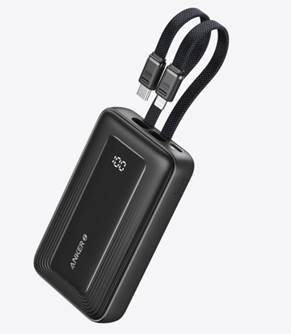Power
banks have become essential for keeping our devices charged on the go. Whether
you’re traveling, commuting, or simply away from an outlet, these portable
batteries ensure your phone or tablet never runs out of juice. However, without
proper care, their performance can degrade quickly, leaving you with a useless
brick. A few simple habits can significantly extend your portable charger’s
lifespan, saving you money and frustration. In this article, we’ll explore five
easy yet effective ways to maintain your power bank so it stays reliable for
years.

1. Store Your Power Bank Correctly
Keep It at 50% Charge for Long-Term Storage
If
you won’t be using your power bank for weeks or months, storing it with a full
or empty charge can harm the battery. Lithium-ion batteries, which most power
banks use, degrade faster when kept at 100% or 0% for long periods. Instead,
aim for around 50% charge before storing it. This reduces stress on the battery
cells and helps maintain their capacity. Think of it like pausing a movie—you
wouldn’t leave it at the very beginning or end, but somewhere in the middle. A
quick check every few months to top it up to 50% ensures it stays in good
condition until you need it again.
Avoid Extreme Temperatures & Humidity
Power
banks are sensitive to heat and cold. Leaving one in a hot car or a freezing
backpack can permanently damage the battery. High temperatures accelerate
chemical reactions inside the battery, shortening its lifespan, while extreme
cold can reduce its ability to hold a charge temporarily. Humidity is another
enemy—moisture can corrode internal circuits. Store your power bank in a cool,
dry place, like a drawer or a shelf indoors. If you’re traveling, avoid leaving
it in direct sunlight or near heaters. A little care goes a long way in
preserving its health.

2. Charge It the Right Way
Never Overcharge or Drain Completely
Modern
power banks have built-in protections against overcharging, but keeping them
plugged in for days isn’t ideal. Similarly, draining the battery to 0%
regularly strains the cells. Instead, recharge your power bank when it drops to
around 20-30% and unplug it once it reaches 100%. This practice, known as
partial charging, helps lithium-ion batteries last longer. Think of it like
eating—you wouldn’t starve yourself or overeat every day. A balanced approach
keeps the battery healthy and efficient for years.
Use the Correct Charger & Cable
Not
all chargers and cables are created equal. Using a low-quality or incompatible
charger can lead to slow charging, overheating, or even damage. Always use the
cable and adapter recommended for your power bank. If the original cable is
lost, choose a high-quality replacement from a trusted brand. Cheap, frayed, or
counterfeit cables may not deliver the right voltage, putting unnecessary
stress on the battery. A good rule of thumb: if your power bank charges
unusually slowly or gets hot, check your cable first.
3. Maintain Battery Health with Regular Use
Power
banks aren’t meant to sit idle for months. Regular use keeps the battery active
and prevents it from losing capacity over time. If you rarely use yours, try
charging a device with it at least once a month. This prevents the battery from
entering a deep discharge state, which can be hard to recover from. Think of it
like exercising—a muscle that isn’t used weakens over time. A quick monthly
cycle ensures your power bank stays ready when you need it most.
4. Protect It from Physical Damage
Drops,
bumps, and pressure can damage your power bank’s internal components. A cracked
casing might expose the battery to moisture or dust, leading to malfunctions or
even safety hazards. Invest in a protective case or sleeve if you carry it in a
bag with other items. Avoid placing heavy objects on top of it, and handle it
gently. If you notice any swelling, leaks, or unusual heat, stop using it
immediately—these are signs of a failing battery that needs replacement.
5. Clean & Inspect It Periodically
Dust
and debris can clog charging ports, reducing efficiency or causing connection
issues. Use a soft, dry brush or compressed air to clean the ports
occasionally. Check the cable and power bank for signs of wear, like frayed
wires or loose connections. Wipe the exterior with a slightly damp cloth (never
wet) to remove dirt. Regular inspections help catch small issues before they
become big problems, ensuring your power bank stays reliable.
Conclusion
Taking
care of your power bank doesn’t require much effort—just a few mindful habits.
By storing it properly, charging it correctly, using it regularly, protecting
it from damage, and keeping it clean, you can extend its lifespan
significantly. A well-maintained power bank can serve you reliably for years,
making it a worthwhile investment. If you’re looking for a durable option,
Anker power banks are worth considering for their quality and longevity. Start
applying these tips today, and you’ll never be left with a dead device when you
need it most!



